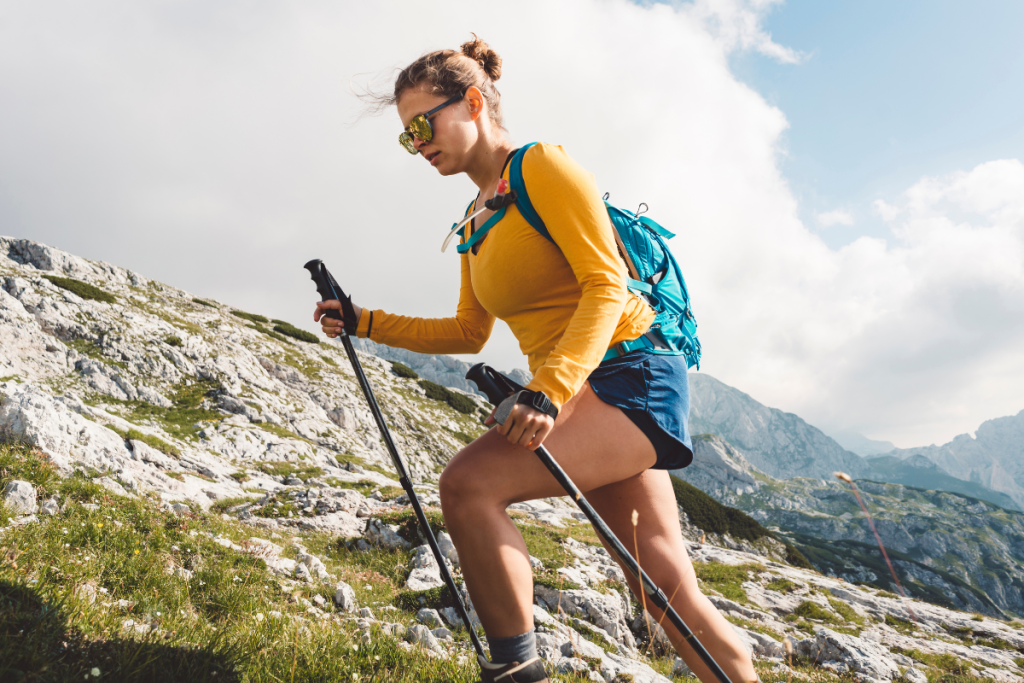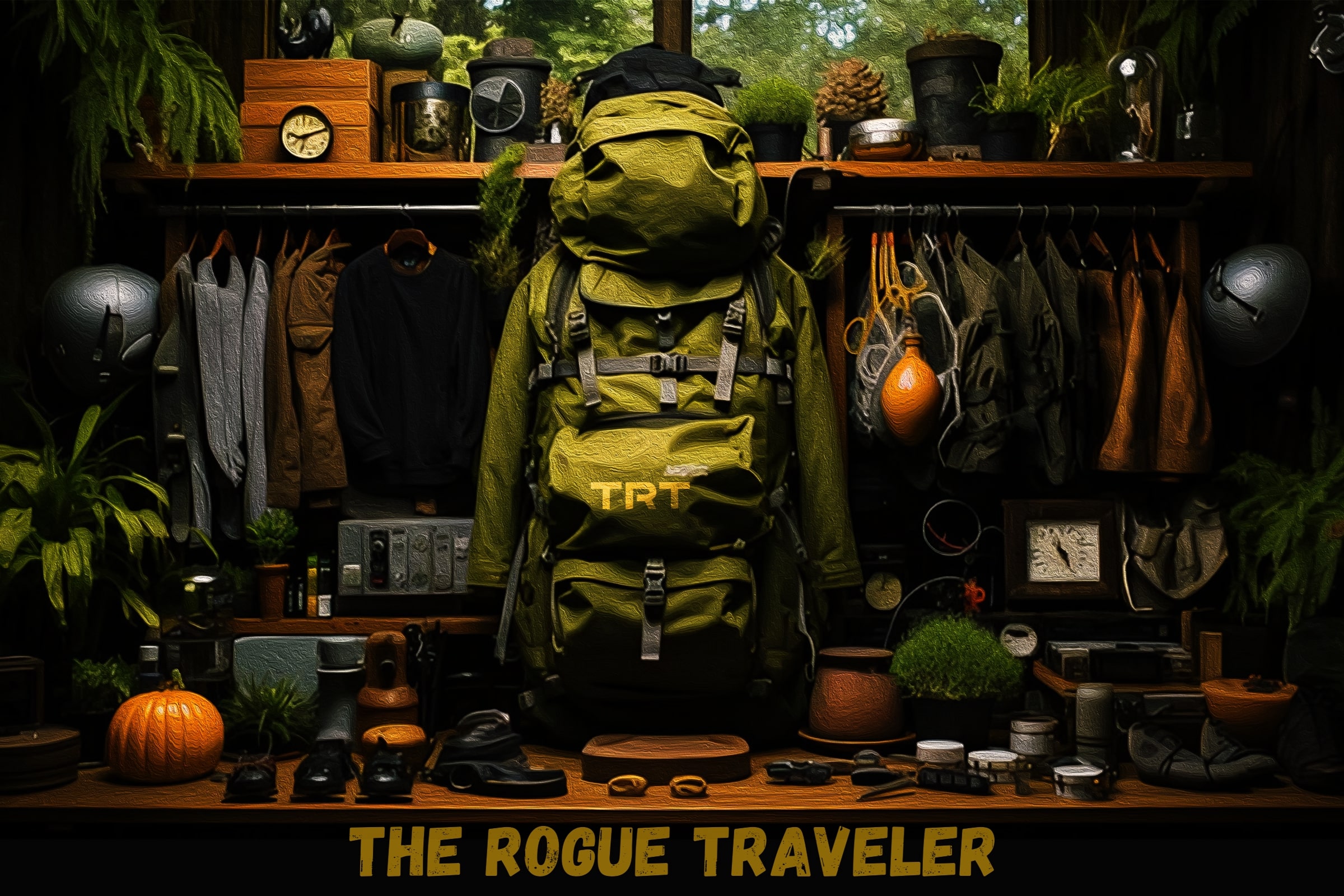Hiking is a joyous activity, celebrated by many as a means of breaking away from the humdrum of daily life. Whether you’re just making your foray into this exciting world or consider yourself a seasoned veteran, what you wear on your hiking adventure makes a significant difference. Carrying the right gear greatly increases your comfort, performance, and safety.
So, let’s take a closer look at all you need to nail the mountain essentials.
Choosing The Right Clothes To Wear Hiking: The Base Layer
This layer’s primary function is moisture-wicking. Keeping your skin dry is important to avoid risks of hypothermia. Look for synthetic and wool fabric bases, which are perfect for wicking sweat away. Avoid cotton, as it absorbs moisture and can lead to unpleasant chills.
This clothing layer is in direct contact with your skin and plays a vital role in temperature regulation. By absorbing sweat and then evaporating it into the atmosphere, it helps you maintain dryness and insulation, an absolute necessity for changing weather conditions during hikes.
- Material Choices: Synthetic and merino wool are front runners for materials. These materials offer excellent moisture-wicking and quick-drying properties, perfect for those sweaty summer hiking days. A standout is merino wool, known for its natural ability to control odors throughout your hike.
- Pro Tip: Consider separate base layers for your upper and lower body. Opt for breathable, fast-drying hiking shorts or pants for the lower body. As for the upper body – think lightweight and airy, whether that’s a short-sleeved tank top or a long-sleeve shirt designed to tackle varying trail weather changes.

Adhering to these base layer guidelines establishes a firm foundation for an effective hiking outfit, ensuring your summer or winter hike is comfortable and enjoyable, no matter the trail.
Your hiking experience starts with the right base layer!
What To Wear On Hiking Adventures — Middle Layer
This is your insulation layer, aimed to trap body heat. Fleece sweaters, down vests, or microfiber jackets can be an excellent mid-layer – they’re lightweight, offer superb insulation, and dry quickly.
This layer acts as an essential buffer between the weather outside and your body’s base layer, providing essential warmth. The mid-layer is designed to retain body heat that your base layer has allowed to escape, making it a perfect wear when hiking in cold-weather conditions or high-altitude trails.
- Clothing Options: Fleece jackets and down vests are popular among hikers as mid-layers. Fleece jackets, known for their lightweight warmth, are a great choice for cold and damp conditions, whereas down vests offer excellent insulation for keeping the body’s core warm.
- Pro Tip: Be sure to consider layered dressing when preparing for varying weather conditions. Layering strategically allows you to add or shed layers based on the weather forecast and your own comfort. Remember, your goal should be to avoid sweating while steering clear of shivering!
The cornerstone of good hiking trips is equipped with the right hiking attire. By striking the ideal balance between protection and comfort, you’ll have one less detail to worry about on the trail. Now you’re geared up and ready to rock any wear hiking in spring, summer, fall, or winter!
Outer Layer – Protection Against Elements
Your outer layer is the protective shell against harsh weather conditions like rain, snow, or wind. A two-part jacket system with a water-resistant outer shell and an insulated removable inner jacket offers flexibility across various settings.
The outer layer provides critical protection against wind, rain and snow, ensuring you remain dry and warm. It’s the firm barrier between you and the elements, safeguarding your body while out on a day’s trek. Keep ‘waterproof’ and ‘breathable‘ in mind when considering outer layer options. A breathable yet waterproof layer, such as a rain jacket, allows sweat vapor to escape while keeping rain or snow at bay.
Hardshell jackets are both waterproof and wind-resistant, making them an ideal option for heavy rain or winter hikes. Softshell jackets, on the other hand, offer more breathability and are ordinarily more suited to drier, chillier conditions. Opt for lightweight yet robust outer layers based on your hiking destination and weather forecast. They should allow you the wiggle room to move around freely while providing top-notch protection.
The outer layer in your choice of hiking clothes acts as the first line of defense, enabling you to focus on your adventure without being bogged down by adverse weather conditions.
Happy Hiking!
Addition Outfit Tips — Hiking Pants
Pick between convertible, roll-up, or standard hiking pants based on climate and terrain, all offering versatility across various conditions. In warmer climates, hiking shorts or even running tights can be fantastic. Pants crafted from quick-dry synthetic materials like nylon and polyester are ideal choices. These materials boast breathability and are lightweight, ticking all the boxes for your next hiking trip.
Convertible pants offer unbeatable versatility, transforming into shorts in just a few swift motions. They cater to changing weather conditions and help you easily switch from full-length pants to breezy shorts, making them a favorite on the trails.

One thing all experienced hikers would agree on is to steer clear of cotton materials, especially jeans. Cotton retains moisture, takes longer to dry, and offers poor insulation. Remember, cold-weather hiking calls for warmth and moisture-wicking capabilities – which cotton can’t provide!
Always opt for materials that strike a balance between comfort and durability, and remember – don’t wear cotton!
Hiking Shoes Or Hiking Footwear
Footwear, arguably the most important aspect of hiking gear, shouldn’t be chosen lightly. Look for durable, waterproof, breathable hiking boots with a good grip. Don’t forget to break them in before your hike!
Understanding the diversity of terrain and adjusting your footwear accordingly is paramount. Sturdy hiking boots offer exemplary ankle support and rugged outsoles for grip on steep or rocky trails. Conversely, lower-cut hiking or trail running shoes might be more suitable for smoother or moderate trails – lightweight yet protective.
Ensure that your footwear remains competent and comfortable across diverse weather conditions. An insulated, waterproof boot is ideal for a winter hike, while a breathable hiking shoe complements a summer hiking outing. The right hiking socks can work wonders in enhancing comfort and performance. Merino wool socks, for example, are excellent for their moisture-wicking and temperature-regulating capabilities.
From wrestling with rocky terrain to battling harsh weather changes, your choice of hiking footwear will significantly influence your on-trail comfort and safety. Picking the right shoes or boots – coupled with suitable socks – will set you on the best hiking path forward.
Other Hiking Accessories To Consider
While your clothes and footwear take center stage, don’t forget the trail-enhancing power of well-chosen accessories.
The right accessories can make a world of difference, offering vital protection and optimizing your hiking experience. Key items include:
- Hats: Shield your face from sun and rain while maintaining visibility on your path.
- Gloves: Keep your hands toasty during cold-weather hiking and ensure a firm grip.
- Sunglasses: Protect your eyes from harmful UV rays and enhance visual clarity.
When selecting sunglasses, opt for ones with 100% UVA/UVB protection. For hats, wide-brimmed options are excellent for all-around sun protection.
Don’t forget to pack essential items like:
- A map and compass for navigation
- A first-aid kit
- Sunscreen and bug spray
- A headlamp or flashlight
- Plenty of water and high-energy snacks
And above all, remember that comfort is king. What you wear should fit well, not weigh you down, and should definitely pass the ‘comfort test’.
Thorough preparation, well-suited clothing, and versatile accessories contribute significantly to a successful hiking trip. Make sure you research climate, altitude, and trail conditions before embarking on your hike to tailor your attire accordingly.

Remember, the great outdoors is best enjoyed with proper planning. Gear up and get ready to conquer your next hiking adventure comfortably and stylishly.
Check out the Rogue Travelers blog for more tips on hiking and hiking essentials!





0 Comments